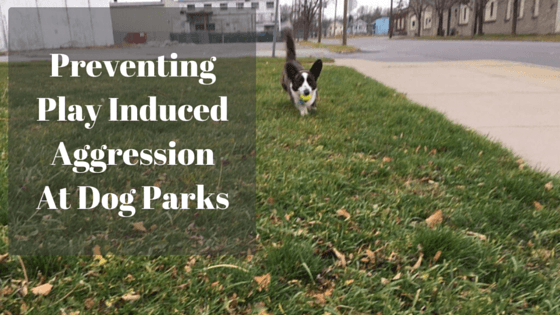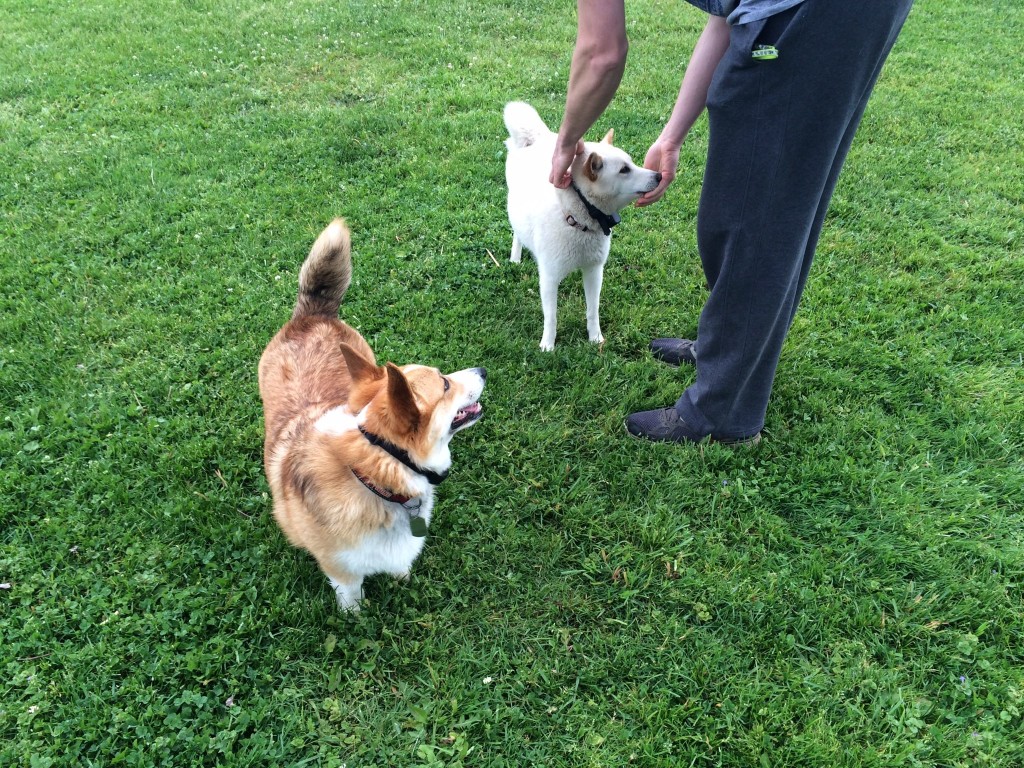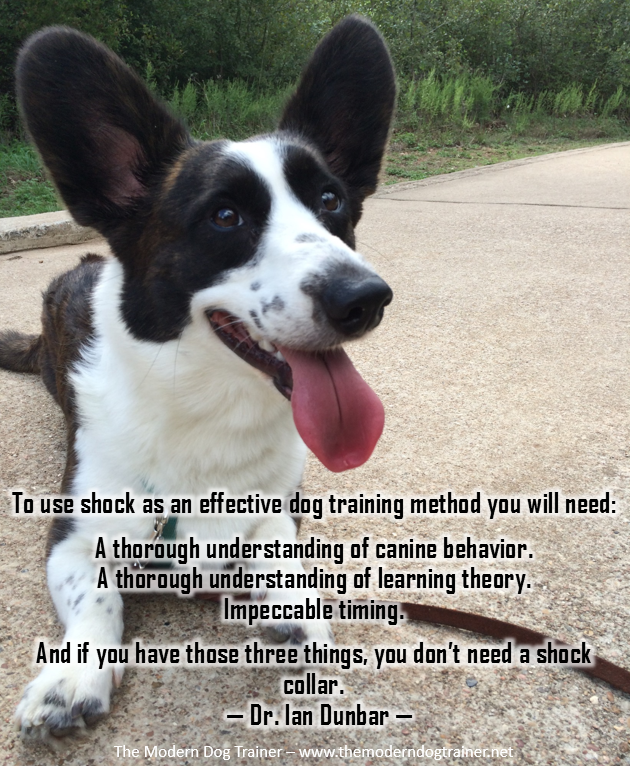![Guest Post: What Breed is That Doggy in the Shelter Window?]()
by TMDT Team | Mar 5, 2016 | Events, Research, Training Methods
This post is written and provided by Lisa Gunter, MA. Lisa is a PhD student at Arizona State University in the Department of Psychology and conducts her research under the mentorship of Clive Wynne in the Canine Science Collaboratory. She has presented her research at numerous conferences including the Association of Professional Dog Trainers, the Interdisciplinary Forum for Applied Animal Behavior, the Veterinary Behavior Symposium and the International Society of Anthrozoology.

What Breed is That Doggy in the Shelter Window?
Chihuahua. Chow Chow. Pointer. Irish Wolfhound. When thinking about unique breeds and the range of physical differences that exist with man’s best friend, it’s hard to believe that a tiny toy lap dog and another that’s as tall as a human are of the same species [1].
For centuries, we’ve bred dogs for the purpose of aiding us in our work, such as in hunting (Labradors), herding (German Shepherd), and livestock protection (Great Pyrenees) [2]. Our influence on how dogs look and act brings along with it expectations about different dog breeds. When I say “Golden Retriever,” you likely think of a fluffy blonde dog that enjoys playing with children. When I mention a Border Collie, you probably imagine a wickedly smart black & white dog that plays fetch for hours.
In the United States, there are a little over 80 million dogs living with us with 20% of those dogs adopted from shelters [3]. As many of you have experienced firsthand, the way animal shelters operate today has changed from what homeless animals experienced just fifteen years ago. Before 2000, dogs usually stayed on average for about 10 days at the shelter. Then, over half were euthanized, and the others were either adopted or redeemed [4]. Today, the situation is better. While almost 4 million dogs are entering animal shelters each year, only 30% are euthanized [5]. While we’re pleased with these improvements, one of our main foci of research in the Canine Science Collaboratory at Arizona State University is to further increase adoptions and reduce euthanasia rates for pet dogs.
Given the importance placed on appearance in our culture, it should come as no surprise that looks matter in canine adoption, too! Researchers from the American Society for the Prevention of Cruelty to Animals (ASPCA) [6] found that appearance was the single most important reason people gave for why they adopted the dog they did. In our own lab we found that when potential adopters were presented with photographs of dogs that had been either adopted or euthanized they were able to distinguish which dogs had met which fate solely because the adopted dogs were more attractive than those that had ended up euthanized [7].
The Pit Bull Label
If you work in animal sheltering, you’ve likely heard of the term “pit bull.” While there is a specific breed of dog known as the American Pit Bull Terrier, more conventionally this label has been applied to many breeds that are short-haired, muscular and blocky-headed such as American and English bulldogs, Staffordshire bull terriers and American Staffordshire terriers as well as mixes of these types of dogs [8].
Recent studies into dog adoption [11, 7, 12-13] have found breed to be associated with different outcomes, including but not limited to increased euthanasia and length of stay. With the big role that physical appearance plays in dog selection, our lab was interested in understanding how breed labels could influence how attractive a dog seemed to be.
So what is the basis for the negative perceptions about pit bulls? The pit bull terrier does have a past that includes bullbaiting and dogfighting (which still occurs illegally in some areas of the US), and reports of aggression towards humans, specifically dog bite injuries and even deaths, have likely contributed to the unfavorable public opinion of these dogs as well [14-18]. Yet while an association may exist between certain types of dogs and aggression towards people, the reliability of breed characterizations in positively identifying dogs involved in these types of incidents is hotly debated [8, 19].
Labels vs. DNA Analysis

Photo by Erin Bessey
Which leads us to wonder what breeds of dogs are there shelters? It’s a more complicated question than it may appear, because breed assignment is usually based on the way the dog looks. Yet, researchers from Western University of Health Sciences [20-21] have found discrepancies between breed identification and the results of DNA analysis, and researchers in Florida found at one shelter that 50% of dogs that were labeled as belonging to a pit-bull-type breed lacked the DNA breed signature [22].
In our own lab, we’re wrapping up a multi-shelter study using the MARS Wisdom Panel. While it’s too early to talk about our specific findings, what we can say is that these shelter dogs show a range of breed diversity (over 150 breeds were identified at each shelter!), there are much fewer purebreds than we anticipated, most dogs have more than two breeds in their breed heritage and correctly identifying the breeds of a mixed breed dog via visual identification alone is an extremely difficult task.
Canine Science Symposium
Research questions like the ones I’ve mentioned here are just some of the questions we attempt to answer in the Canine Science Collboratory. If you enjoy learning about the latest research in canine science, you may want to consider attending our Canine Science Symposium. Now in its fourth year, the Symposium will be taking place at the San Francisco SPCA on April 16 & 17.
 While most of the speakers at the Canine Science Symposium are former or current students of Clive Wynne (the director of the Canine Science Collboratory), our research interests are diverse as evidenced by this year’s Symposium topics. Our presentations include decoding dominance in dogs; canine sociability and attachment; using advanced behavioral principles in dog training; applying cognitive, behavioral and physiological measures to improve shelter dog welfare; using play as training and enrichment; understanding visitor behavior in shelters to increase adoptions; exploring canine olfaction and interpreting canine body language. We want those that come out to learn with us to be able to walk away with new techniques and approaches to try in their interactions with shelter dogs, dogs that they train and the dogs they live with.
While most of the speakers at the Canine Science Symposium are former or current students of Clive Wynne (the director of the Canine Science Collboratory), our research interests are diverse as evidenced by this year’s Symposium topics. Our presentations include decoding dominance in dogs; canine sociability and attachment; using advanced behavioral principles in dog training; applying cognitive, behavioral and physiological measures to improve shelter dog welfare; using play as training and enrichment; understanding visitor behavior in shelters to increase adoptions; exploring canine olfaction and interpreting canine body language. We want those that come out to learn with us to be able to walk away with new techniques and approaches to try in their interactions with shelter dogs, dogs that they train and the dogs they live with.
For more information on the research studies I mentioned above, check out the journal articles references below. If you’re interested in attending the Canine Science Symposium, head on over to the SFSPCA website for all the details including speaker bios, presentation descriptions and online registration (at the bottom of the page). Our early-bird registration ends March 2nd, so those that want to attend should sign up now!
References
1. Coile DC. The dog breed bible. Hauppauge: Barron’s Educational Series; 2007.
2. Serpell J. The domestic dog. Cambridge: Cambridge University Press; 1995.
3. American Pet Products Association. U.S. pet-ownership estimates from the APPA for 2012. Available: http://www.humanesociety.org/issues/pet_overpopulation/facts/ pet_ownership_statistics.html#.U0oh8uZdW_A. Accessed 30 January 2014.
4. Wenstrup J, Dowidchuk A. Pet overpopulation: Data and measurement issues in shelters. J Appl Anim Welf Sci. 1999;2(4): 303-19.
5. American Society for the Prevention of Cruelty to Animals. FAQ, Pet statistics, 2012. Available: http://www.aspca.org/about-us/faq. Accessed 19 September 2014.
6. Weiss E, Miller K, Mohan-Gibbons H, Vela, C. Why did you choose this pet?: Adopters and pet selection preferences in five animal shelters in the United
States. Animals. 2012;2(2): 144-59.
7. Protopopova, A, Gilmour, AJ, Weiss, RH, Shen, JY, & Wynne, CDL. The effects of social training and other factors on adoption success of shelter dogs. J Appl Anim Welf Sci. 2012;142(1): 61-8.
8. Lockwood, R, Rindy, K. Are “pit bulls” different? An analysis of the pit bull terrier controversy. Anthrozoos. 1997;1: 2-8.
9. Posage, JM, Bartlett, PC, Thomas, DK. Determining factors for successful adoption of dogs from an animal shelter. J Am Vet Med Assoc. 1996;213(4): 478-82.
10. Lepper, M, Kass, PH, Hart, LA. Prediction of adoption versus euthanasia among dogs and cats in a California animal shelter. J Appl Anim Welf Sci. 2002;5(1): 29-42.
11. Brown, WP, Davidson, JP, Zuefle, ME. Effects of phenotypic characteristics on the length of stay of dogs at two no kill animal shelters. J Appl Anim Welf Sci. 2013;16(1): 2-18.
12. DeLeeuw, JL. Animal shelter dogs: Factors predicting adoption versus euthanasia. Doctoral dissertation, Wichita State University. 2010. Available: http://soar.wichita. edu/bitstream/handle/10057/3647/d10022_DeLeeuw.pdf?
sequence=1
13. Clevenger, J, Kass, PH. Determinants of adoption and euthanasia of shelter dogs spayed or neutered in the University of California veterinary student surgery program compared to other shelter dogs. J Vet Med Educ. 2003;30(4): 372-378.
14. Sacks, JJ, Sattin, RW, Bonzo, SE. Dog bite-related fatalities from 1979 through 1988. J Am Vet Med Assoc. 1989;262(11): 1489-1492.
15. Sacks, JJ, Lockwood, R, Hornreicht, J, Sattin, RW. Fatal dog attacks, 1989-1994. Pediatrics. 1996;97(6): 891-895.
16. Sacks, JJ, Sinclair, L, Gilchrist, J, Golab, GC, Lockwood, R. Breeds of dogs involved in fatal human attacks in the United States between 1979 and 1998. J Am Vet Med Assoc. 2000;217(6): 836-840.
17. Kaye, AE, Belz, JM, Kirschner, RE. Pediatric dog bite injuries: A 5 year review of the experience at the Children’s Hospital of Philadelphia. Plast Reconstr Surg. 2009;124(2): 551-558.
18. O’Brien, DC, Andre, TB, Robinson, AD, Squires, LD, Tollefson, TT. Dog bites of the head and neck: an evaluation of a common pediatric trauma and associated treatment. Am J Otolaryngol. 2015;36(1): 32-38.
19. Patronek, GJ, Sacks, JJ, Delise, KM, Cleary, DV, Marder, AR. Co-occurrence of potentially preventable factors in 256 dog bite–related fatalities in The United States (2000-2009). J Am Vet Med Assoc. 2013;243(12): 1726-1736.
20. Voith, V, Ingram, E, Mitsouras, K, Irizarry, K. Comparison of adoption agency breed identification and DNA breed identification of dogs. J Appl Anim Welf Sci. 2009;12(3): 253-262.
21. Voith, VL, Trevejo, R, Dowling-Guyer, S, Chadik, C, Marder, A, Johnson, V et al. Comparison of visual and DNA breed identification of dogs and inter-observer reliability. Am J Sociol Res, 2013;3(2): 1729.
22. Olson, KR, Levy, JK, Norby, B, Crandall, MM, Broadhurst, JE, Jacks, S et al. Inconsistent identification of pit bull-type dogs by shelter staff. Vet J , 2015.
23. Patronek, GJ, Glickman, LT, Moyer, MR. Population dynamics and the risk of euthanasia for dogs in an animal shelter. Anthrozoos. 1995;8(1): 31-43.
24. Salman, MD, New, Jr, JG, Scarlett, JM, Kass, PH, Ruch-Gallie, R, Hetts, S. Human and animal factors related to relinquishment of dogs and cats in 12 selected animal shelters in the United States. J Appl Anim Welf Sci. 1998;1(3): 207-226.
![Guest Post: What Breed is That Doggy in the Shelter Window?]()
by Liz Wyant | Feb 26, 2015 | Research

Behind every great dog trainer is a great training bag. Between treats, clickers, toys, notepads, treat pouches, harnesses, and leashes, it can be difficult finding an appropriately sized bag that isn’t super bulky and half the size of Ohio. So when Ruffwear introduced their new Haul Bag, dog trainers everywhere rejoiced in expectation. Ruffwear has a history of making extraordinary products and this bag was expected to hold up to their standards.
Ruffwear was gracious enough to send The Modern Dog Trainer a bag to try out. To nobody’s surprise, this bag stands out in a large crowd of training bags.
This bag appears deceptively small. It is 16.5″ long, 11.81″ wide, and 12.2″ tall. It comes with two small handles for hand-held carrying as well as a shoulder strap. It has a zippered top. On one outer side, there is a large zippered pocket that goes the length of the bag. On the other side are three mesh pockets, one perfectly sized for business cards, and then two larger ones. On one end is a label that can be filled out with your contact information.
Notice the three pockets. The smaller pockets is perfect for business cards.


Notice the label for your personal information on the bag.

Inside Compartments Of The Haul Bag
It is upon opening the bag that the wow factor really kicks in. The bag is gigantic. It has what Ruffwear calls a “gatemouth” opening, which opens the bag to a full rectangle. The inside, like the outside, has both a zippered pockets on one side and mesh pockets on the other side. The bottom is wide and flat.
Notice one side with a zipper and one with pockets.

 I was pleasantly surprised to find that all the training gear that had maxed out my other training bag fit into the Ruffwear bag with plenty of room to spare.
I was pleasantly surprised to find that all the training gear that had maxed out my other training bag fit into the Ruffwear bag with plenty of room to spare.
Even when fully stuffed, the bag is lightweight and comfortable to carry. When slung over a shoulder, it is less prone to knocking into furniture, vehicles, dogs, and people than other training bags due to the smaller dimensions and tapered top.

The Haul Bag is not inexpensive; however, with the sturdy materials and craftsmanship, as well as the lovely yet simple design, it is a bag you will not have to replace in the near future. If you are a professional trainer, be sure to join Ruffwear’s Pro Purchase Program for a discount on their items!
Get Dog Training Business Tips!
Receive valuable dog training business tips and resources every week! Subscribe to The Modern Dog Trainer now by submitting your name and email below.
[mc4wp_form]
*This bag was given to The Modern Dog Trainer for free for the review. Our opinion of this product was not affected by Ruffwear’s generosity. We participate in Ruffwear’s affiliate program in order to support this blog and our dedicated contributors.
![Guest Post: What Breed is That Doggy in the Shelter Window?]()
by Liz Wyant | Feb 9, 2015 | Research

Fear And Anxiety In Dogs Causes Damage
Nobody enjoys seeing frightened or anxious dogs. It wrenches at the heart-strings as we internalize how we feel when anxious. But this study makes it even worse. It speculates that fear and anxiety can actually shorten dogs’ lives.
In this article, “The Unexpected Dog Killer,” pulled from Scientific American, the author points out that even though modern-day dogs have relatively comfortable lives, they do still face many stressors – repeated separations as owners go to work, variable schedules, frequent mixing with strange dogs and people, and then of course fireworks (which prompted the article’s writing). In some dogs, these stressors cause fear and anxiety, either generalized or specific.
This study was formulated by questioning owners whose dogs had died within the last five years. There were 99 questions for each owner, and 721 people participated.
The study came to two conclusions:
- “Being afraid of unfamiliar people (often called stranger-directed fear) predicted decreased lifespan. Dogs with extreme stranger-directed fear died six months earlier than dogs without.”
- “Non-social fears (like showing fearful behavior towards “noise, unfamiliar objects, traffic, storms, wind, new situations”) did not predict lifespan, but non-social fear and separation anxiety did predict both severity and presence of skin problems in adult dogs.”
Studies in rats and other species have also shown that chronic stress affects health and lifespan. One study showed that rats who were constantly fearful died sooner than their more relaxed brethren.
How This Applies To Training
So, as modern dog trainers, what does this mean for us? First, it means it is crucial that we become fluent in canine body language so we can help owners see when their dogs are exhibiting fear and anxiety. Next, it requires us to remain up to date with compassionate methods to help dogs learn to overcome/work through these fears. Lastly, it means we need to help our clients maintain an open mind regarding pharmaceutical or supplemental intervention to help dogs deal with their fear and anxiety while counterconditioning and desensitization are occurring. This can be aided by having a good working relationship with a veterinarian in your area.
How do you help your clients identify fear and anxiety in their dogs?
Get Dog Training Business Tips!
Receive valuable dog training business tips and resources every week! Subscribe to The Modern Dog Trainer now by submitting your name and email below.
[mc4wp_form]
![Guest Post: What Breed is That Doggy in the Shelter Window?]()
by Liz Wyant | Feb 6, 2015 | Research
One of the myths of force-free dog training is that the dogs are simply working for food, and once the food is gone, the obedience will be gone. You, as modern dog trainers, know that is far from the truth. However, here’s a study that was done that also disputes that myth.

“Do Dogs Get That Eureka! Feeling?”
This study, done in Sweden, took 6 matched pairs of Beagles. The Beagles alternated between the experimental group and the control group. Six pieces of equipment were present. Three of the pairs would manipulate the pieces of equipment and the other pairs would manipulate the other equipment. The room the experiment took place in had a runway with a gate that led to the reward (either food or human attention). During the experimental group, the gate would be opened once the dog had successfully manipulated their equipment. During the control group, the gate would open after the same amount of time the dog in the experimental group took, regardless of what actions the control dog was exhibiting, and the same reward would be given.
What they found was that the experimental dogs were incredibly eager to get into the room, while the control dogs started eager but lost interest after two or three times and the experimenter had to start coaxing them into the room. They were less eager while in the test room and would sometimes bite or chew on the equipment, which none of the experimental dogs had done. When the runway gate was opened, the control dogs were much faster to leave the room to pursue their reward.
Regarding rewards, when the reward was food or time with another dog, the control dogs left the arena more quickly than the experimental dogs. However, when the reward was human petting, both groups of dogs left at the same rate. Both sets of dogs were more active though when the reward was food.
Conclusions From This Research
So what does this study teach us? Well, a couple of possibilities. First, the experimental dogs were in control over their environment. The gate to the runway opened after they successfully manipulated their equipment. Secondly, they were problem-solving. They were getting mental stimulation. The control dogs had no control over their environment and they got a reward no matter what they did. Lack of control over one’s environment is stressful. All animals, including humans, thrive when they have control over their environment.
The researchers said, ““The experimental animals in our study were excited not only by the expectation of a reward, but also about realizing that they themselves could control their access to the reward. These results support the idea that opportunities to solve problems, make decisions, and exercise cognitive skills are important to an animal’s emotional experiences and ultimately, its welfare.”
So, as modern dog trainers, how can you use this to your benefit?
- Encourage your clients to use enrichment toys with their dogs.
- Play nosework games.
- Give the dog the opportunity to EARN treats, not just receive them.
- Most importantly, give the dog some control. If you can tell the dog is uncomfortable in its environment, remove it. Follow the dog’s lead. Encourage your clients to take meandering walks where the dog gets to choose the direction they go and when they are going to stop and sniff.
What other things can you think of that allows dogs to have some control and problem solve?
Get Dog Training Business Tips!
Receive valuable dog training business tips and resources every week! Subscribe to The Modern Dog Trainer now by submitting your name and email below.
[mc4wp_form]
![Guest Post: What Breed is That Doggy in the Shelter Window?]()
by Ines | Dec 9, 2014 | Research
The Truth About Shock Collars: There Shouldn’t Be A Trade Off Between Welfare And Better Behavior
A recent article was published that discusses the humane-ness of using shock collars to train dogs. The Science of Dog Training: Is It Okay To Use A Shock Collar? discusses the research behind the conclusion that shock or ecollars as training aids are as effective as positive reinforcement methods alone which makes their use utterly unnecessary.
Jonathan J. Cooper and his research team decided to delve more deeply into the animal welfare effects of Remote Electronic Training Collars (RETC). They were on a mission to reveal:
- whether shock collars used to train household pets were effective, and
- what were the associated welfare consequences.
Cooper and his team paid very close attention to some of the common variables in dog training. Their experiment set up broke down the dogs into three groups. Group A was trained using a shock collar by an experienced, Electronic Collar Manufacturers Association (ECMA) nominated professional trainer, Group B was trained by the same trainer and wore an inactive shock collar, and Group C worked with the Association of Pet Dog Trainers (an anti-electronic collar group) nominated professional dog trainer. The inactive shock collars in Group B prevented observers from telling which group they belonged to. All groups utilized positive reinforcement to acknowledge appropriate behavior.
Results
No matter the method, over 91% of owners were thrilled with the results that the training had on their dogs. Surprisingly, physiological urinary stress hormones were at similar levels throughout the groups and showed no significant changes. Group C showed higher levels of salivary cortisol than Groups A and B which was unexpected, but compared to the before and after training cortisol levels, none of the groups showed significant changes.
It was observed that Groups A and B displayed more stress-related behaviors and winced from sudden movement more often than Group C did with their trainers. This was perhaps due to the trainer’s style or personality rather than due to the active or inactive shock collars they were wearing.
More important than the method trainers teach to owners is owner compliance. Without owner compliance, no method will be successful. Surprisingly, only 76% of the owners in Group A were willing to continue the training compared to 95-100% of owners from Group B and C. Group A’s lack of confidence demonstrates an average dog owner’s discomfort with using this kind of collar.
“These findings suggest that there is no consistent benefit to be gained from e-collar training but greater welfare concerns compared with positive reward based training” says Cooper.
Future Study Recommendations
This study, just like many, is limited to the techniques the trainers used. Dog training is as much an art as it is a science. While some trainers may believe in the same science behind a method and use the same tools, their application can be completely different. Trainer’s skills and approaches vary greatly and this study was limited to four trainers. A larger number of trainers from a variety of demographics is needed to draw stronger conclusions. Of course, this is usually limited due to funding, time, and resources.
In the future, we would love to see salivary cortisol samples taken more often than just before and after training. Group C displayed higher levels than the other groups which was very interesting. We would like to know the group’s salivary cortisol levels just before receiving their normal meals, during praise-only or play-only training interactions, and how food (as well as the differences between types of food) affect salivary cortisol levels.
Based on the research that is currently accessible, this study is monumental in spreading the truth about shock collars. Their effect on a dog’s mental well-being should not be ignored.
We would like to conclude by leaving this quote for you to ponder. Share your response to this research in the comments below or on our Facebook page.
![Guest Post: What Breed is That Doggy in the Shelter Window?]()
by Ines | Nov 5, 2014 | Research

Research Team
Dog parks are a touchy subject for many dog trainers. While the concept of dog parks is wonderful, the implementation and reality of dog parks are challenging. Dog parks, in theory, are a great way to socialize your dog around other dogs and people off leash. For city dwellers, they may be the only time a dog is able to be off leash outdoors. However, the many stories of bullying and aggression displayed at dog parks are not to be ignored. Fortunately, a research team lead by Lindsay R. Mehrkam, M.Sc. at the University of Florida performed a study to understand what happens when play turns into aggression.
Factors That Contribute To Aggression at Dog Parks
Context is an important factor in understanding dog-dog interactions. The researchers were aware of this and took context into considerations. The team only took into account play that turned aggressive in order to remain objective. They also ended the video recordings at the very first sign of aggression in order to stay objective and prevent their personal biases from intervening in their observations. The size of the dog park was important. Larger dog parks had fewer cases of aggression than smaller ones. The size of the confined area affected how the dogs behaved with one another. They also observed high contact play usually occurred between dogs that were already quite familiar with each other.
Precursors To Aggression
The teams research discovered some simple and consistent predictors to aggression at dog parks. While these are not 100% guaranteed to lead to aggression, they are common precursors to it. Behaviors such as vocalizations and hackles near the tail were found to be common in play that lead to aggression. Additionally, dogs who tucked their tails at any point had a 58% higher likelihood of becoming aggressive. These specific behaviors can be observed fairly easily by anyone who knows what to look for.
Current Research Conclusions
The researchers concluded that aggression occurs in about 1 in 10 play interactions at dog parks. They discovered that owners did not intervene enough – only in about 5% of play encounters. They want to make it clear that there isn’t a single behavior that will lead to aggression 100% of the time so that should be taken into consideration. Context is extremely important in understanding dog-dog interactions. They concluded that the best thing to do is to be an advocate for the dog you are responsible for. Train them before entering the dog park so that you can safely leave challenging or uneasy situations.
Do you recommend your clients take their dogs to the dog park? Do you recommend they avoid dog parks?
Recommended Articles
![Guest Post: What Breed is That Doggy in the Shelter Window?]()
by Ines | Oct 8, 2014 | Research
Are Electronic Collars A Welfare Risk To Dogs?

A recent peer-reviewed study explained by Science Daily analyzed how electronic collars used to correct undesired behaviors effected a dog’s anxiety and stress levels. The dogs stress levels were measured by cortisol levels in their saliva and by observing calming signals such as sniffing and yawning. Behaviors that were addressed included chasing livestock and poor recall.
Misuse – The Biggest Threat With Electronic Collars
The trainers in the first study did not use the collars within the recommended guidelines from the manufacturer. We’d like to claim that many average dog owners are not very likely to utilize these collars exactly as the instructions said due to their desired for improved behaviors quickly or simply a lack of understanding about how sensitive dogs can be without showing obvious signs of discomfort.
The second study, which included over 60 dogs, used the collars as directed by the manufacturer. This resulted in less stress than the first study, but did not eliminate all anxiety. They consistently showed more tension and less engagement with the environment than those in the control group.
Ultimately Electronic Collars Are Unnecessary
The study concluded that there are more hazards with electronic collar training than with consistent positive reinforcement based training. The risk of side effects due to electronic collar training increases if the guidelines from the manufacturer are ignored. Ultimately, we must understand that most normal dog owners cannot be trusted to have the correct understanding of timing and intensity levels that most pros still have yet to master; therefore, making this tool risky and unnecessary.
Lead author Jonathan Cooper, Professor of Animal Behaviour and Welfare at the University of Lincoln’s School of Life Sciences, said: “e-collar training did not result in a substantially superior response to training in comparison to similarly experienced trainers who do not use e-collars to improve recall and control chasing behaviour. Accordingly, it seems that the routine use of e-collars even in accordance with best practice, as suggested by collar manufacturers, presents a risk to the well-being of pet dogs. The scale of this risk would be expected to be increased when practice falls outside of this ideal.”
![Guest Post: What Breed is That Doggy in the Shelter Window?]()
by Ines | Sep 29, 2014 | Events, Research
May She Rest In Peace And Happiness: Sophia Yin
It was announced this afternoon that Dr. Sophia Yin has passed away. We are overwhelmed with shock and sadness as we process this news. She has played a critical role in the modernization of dog training. Her Facebook profile shared this picture to announce this unfortunate news:

Over the years, she has been a strong role model for veterinarians and dog trainers alike. She shared her knowledge and skills with thousands of teachers both in person and online. There is no doubt she increased the quality of life of many, many animals through the demonstration of her veterinary handling videos and resources.
She will be dearly missed and will never be forgotten.
Recommended Articles
![Guest Post: What Breed is That Doggy in the Shelter Window?]()
by Ines | Sep 29, 2014 | Research
 Dominance in dogs is something that is constantly debated among dog trainers.
Dominance in dogs is something that is constantly debated among dog trainers.
Recent research suggests that dominance should simply be used to describe one animals relationship with another and not as a type of behavior. Conflict resolution is something that all animals must come to terms with in order to survive. Injuries caused by unnecessary fighting between individuals of the same species is detrimental to the species survival. Dominance and submission relationships are critical to keeping peace between members of the same family. Click HERE for a link to the American Veterinary Society of Animal Behavior Position Statements on Dominance.
David Mech, the original researcher who coined the term “alpha,” now retracts his statement about wolf packs competing for alpha status. He now states that wolf packs are similar to families. The “alphas” are usually the parents and the subordinates are offspring. Dominance is simply a matter of “respecting your elders.”
Dominance Is Expressed To Keep Possession Over Resources
When one dog has possession of a resource such as food, a mate, water, or comfort, they can express their dominance over other animals to keep that resource. Keeping possession over resources is a critical survival skill that is necessary to all animals. If an animal is unable to keep possession, then they will likely perish or go through severe hardships. Unfortunately, just because a dog is now usually located in a home with ample resources doesn’t mean they will stop guarding their possessions. Clients often fail to understand this and are quick to label their dogs as dominant or submissive when conflicts occur.
How do you explain dominance to your clients? Share in the comments below.
Recommended Articles
![Guest Post: What Breed is That Doggy in the Shelter Window?]()
by Ines | Sep 29, 2014 | Research, Training Methods
Using food in training is your best option to create social, confident, and obedient dogs for your clients.
Many modern dog trainers utilize food in training. While food is an incredibly practical way to motivate dogs, it serves another important functions when it comes to the dog’s confidence. Simply put, food has the power to change how an animals feels about certain situations.

In the article “Preventative Counterconditioning…because bad stuff happens” by Awesome Dogs, the trainer uses an unexpected life event as a chance to countercondition her dogs before they get a chance to make an emotional connection to the situation. Her neighbors were having a huge and loud party and she took the opportunity to feed her dogs chicken. This ensured that the dogs made a good, positive association with the experience before they could decide for themselves.
Proper Socialization
Proper socialization should occur in this manner as well. Its important to help the puppy learn about their environment and teach them that the world is a fun a safe place. Socialization will occur either way so you need to step in and make sure they are creating positive connections with their discoveries by using food in training. In other words, this is also a form of “preventative counterconditioning.”
Chicken Is Powerful
Food has the power to change a dog’s emotional reaction towards stimuli (people, dogs, and other possibly scary things). It is easily deliverable to the dog’s mouth as they observe their environment which makes it an ideal tool to use in training. Granted the dog is not over threshold and too close to their feared trigger, food can help teach a dog new behaviors while creating positive associations and connections in their brains. Just like when people eat their favorite comfort foods, those “feel good” chemicals called endorphins are released in the brain. That warm fuzzy feeling is then paired with the dog’s trigger to make a new connection – “that scary thing makes awesome stuff happen, maybe it isn’t quite so scary anymore!” Basically, food has the power to make the world less scary for any dog.
Recommended Articles


 While most of the speakers at the Canine Science Symposium are former or current students of Clive Wynne (the director of the Canine Science Collboratory), our research interests are diverse as evidenced by this year’s Symposium topics. Our presentations include decoding dominance in dogs; canine sociability and attachment; using advanced behavioral principles in dog training; applying cognitive, behavioral and physiological measures to improve shelter dog welfare; using play as training and enrichment; understanding visitor behavior in shelters to increase adoptions; exploring canine olfaction and interpreting canine body language. We want those that come out to learn with us to be able to walk away with new techniques and approaches to try in their interactions with shelter dogs, dogs that they train and the dogs they live with.
While most of the speakers at the Canine Science Symposium are former or current students of Clive Wynne (the director of the Canine Science Collboratory), our research interests are diverse as evidenced by this year’s Symposium topics. Our presentations include decoding dominance in dogs; canine sociability and attachment; using advanced behavioral principles in dog training; applying cognitive, behavioral and physiological measures to improve shelter dog welfare; using play as training and enrichment; understanding visitor behavior in shelters to increase adoptions; exploring canine olfaction and interpreting canine body language. We want those that come out to learn with us to be able to walk away with new techniques and approaches to try in their interactions with shelter dogs, dogs that they train and the dogs they live with.





 I was pleasantly surprised to find that all the training gear that had maxed out my other training bag fit into the Ruffwear bag with plenty of room to spare.
I was pleasantly surprised to find that all the training gear that had maxed out my other training bag fit into the Ruffwear bag with plenty of room to spare.






 Dominance in dogs is something that is constantly debated among dog trainers.
Dominance in dogs is something that is constantly debated among dog trainers.


